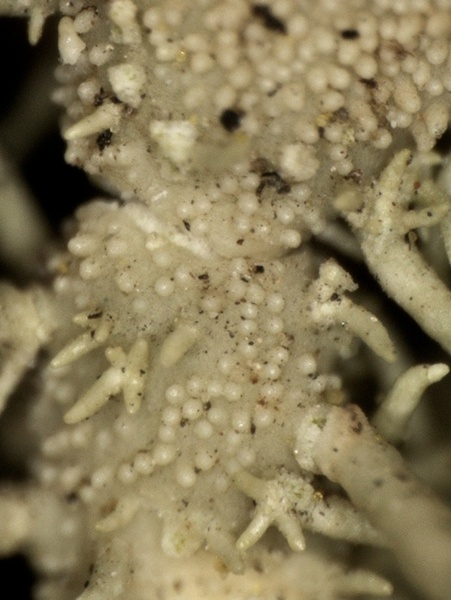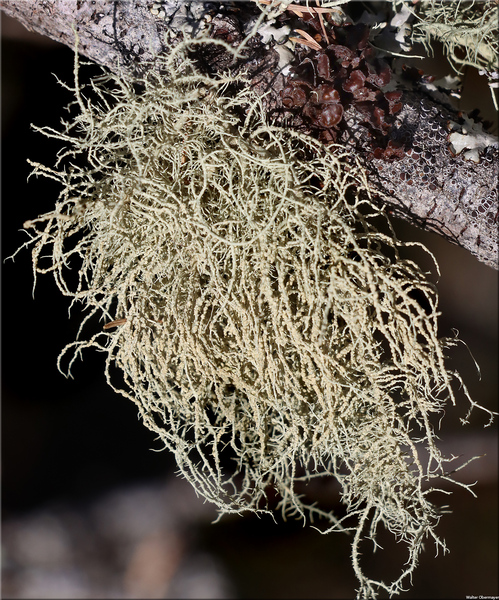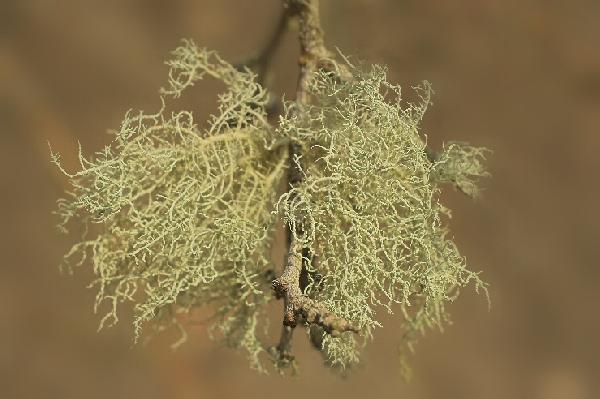Usnea substerilis Motyka
Wyd. Muz. Slask. Katowic., 3, 2: 24, 1930.
Synonyms: Usnea sorediifera Motyka nom.illegit. non (Arnold) Lynge; Usnea sorediifera var. substerilis (Motyka) Keissl.; Usnea stuppea (Räsänen) Motyka
Distribution: N - Ven (TSB 7789), TAA (Nascimbene 2014, Nascimbene & Marini 2015, Trindade & al. 2021, Nascimbene & al. 2022), Lomb (Abramini & al. 2008). VA (Matteucci & al. 2008, Matteucci & al. 2008c, Isocrono & al. 2008). C - Umb (Ravera 1999, Ravera & al. 2006), Laz (Ravera 2006). S - Bas (Potenza 2006, Potenza & Fascetti 2012).
Description: Thallus fruticose-filamentous, greenish, shrubby to subpendulous, usually forming dense, short tufts, up to 12 cm long, richly and mainly sympodially, anisotomic-dichotomously branching, with divergent branches. Main branches of uneven thickness, irregularly deformed, with or without foveoles and transverse furrows, often with annular cracks showing medullary rings, the base greenish to black; secondary branches not constricted at attachment point. Papillae usually numerous, especially on main branches, verrucose to cylindrical; fibrils present, short (< 3 mm), usually unevenly distributed, sometimes abundant also terminally. Soralia conspicuous, irregular to more or less circular in outline, slightly tuberculate to slightly excavate but remaining superficial, larger or at least as large as the branches when mature, sometimes encircling their ends, more or less widely spaced, usually not confluent, arising initially on cortex; isidiomorphs rare, only found on young soralia, never on mature ones. Cortex moderately thin to moderately thick (4-9.5% of total thickness of the branch), matt in longitudinal section medulla moderately thin to moderately thick (19-29%), dense to compact, white; central axis moderately thin to moderately thick (28-46%); ratio axis/medulla 0.8-2.8. Apothecia extremely rare. Photobiont chlorococcoid. Spot tests: cortex K- C-, P-; medulla K+ yellow turning orange-red, C-, KC-, P+ orange-yellow, or K-, P-. Chemistry: four chemotypes: 1) salazinic, ± protocetraric acid, 2) salazinic, barbatic, ± 4-O-demethylbarbatic acids, 3) salazinic, norstictic acids, 4) no lichen substances.
Note: a subcontinental species, often confused in the past with the related U. perplexans; probably one of the most frequent species of the genus in the Alps, also occurring along the Apennines. According to Mark & al. (2016) this is a synonym of U. lapponica (presently U. perplexans), a conclusion which, however is questioned by Clerc & Naciri (2021).
Growth form: Fruticose filamentous
Substrata: bark
Photobiont: green algae other than Trentepohlia
Reproductive strategy: mainly asexual, by soredia, or soredia-like structures (e.g. blastidia)
Commonnes-rarity: (info)
Alpine belt: absent
Subalpine belt: rather common
Oromediterranean belt: absent
Montane belt: rather rare
Submediterranean belt: absent
Padanian area: absent
Humid submediterranean belt: absent
Humid mediterranean belt: absent
Dry mediterranean belt: absent

Predictive model
Herbarium samples
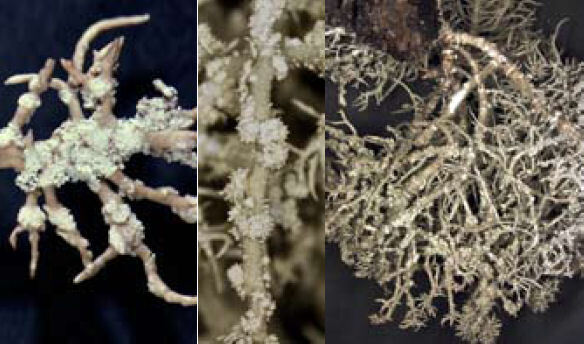
Tiiu Tõrra; Owner: Tiiu Tõrra - Institute of Ecology and Earth Sciences, University of Tartu, Estonia

Tiiu Tõrra; Owner: Tiiu Tõrra - Institute of Ecology and Earth Sciences, University of Tartu, Estonia
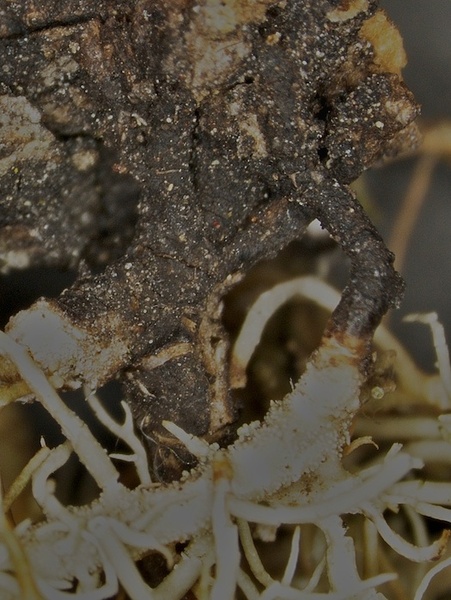
Tiiu Tõrra; Owner: Tiiu Tõrra - Institute of Ecology and Earth Sciences, University of Tartu, Estonia
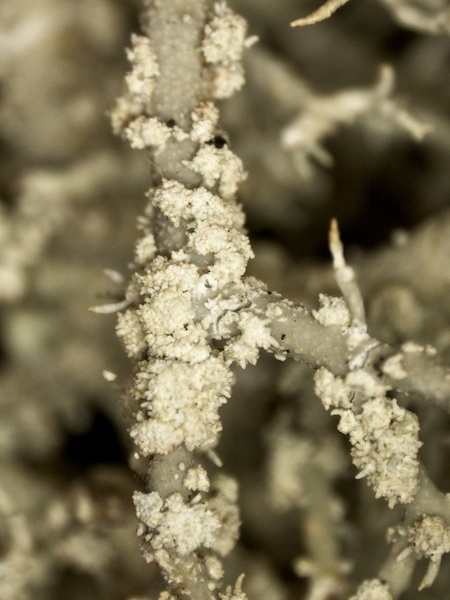
Tiiu Tõrra; Owner: Tiiu Tõrra - Institute of Ecology and Earth Sciences, University of Tartu, Estonia

Tiiu Tõrra; Owner: Tiiu Tõrra - Institute of Ecology and Earth Sciences, University of Tartu, Estonia

Tiiu Tõrra; Owner: Tiiu Tõrra - Institute of Ecology and Earth Sciences, University of Tartu, Estonia
Growth form: Fruticose filamentous
Substrata: bark
Photobiont: green algae other than Trentepohlia
Reproductive strategy: mainly asexual, by soredia, or soredia-like structures (e.g. blastidia)
Commonnes-rarity: (info)
Alpine belt: absent
Subalpine belt: rather common
Oromediterranean belt: absent
Montane belt: rather rare
Submediterranean belt: absent
Padanian area: absent
Humid submediterranean belt: absent
Humid mediterranean belt: absent
Dry mediterranean belt: absent

Predictive model
| Herbarium samples |

Tiiu Tõrra; Owner: Tiiu Tõrra - Institute of Ecology and Earth Sciences, University of Tartu, Estonia

Tiiu Tõrra; Owner: Tiiu Tõrra - Institute of Ecology and Earth Sciences, University of Tartu, Estonia

Tiiu Tõrra; Owner: Tiiu Tõrra - Institute of Ecology and Earth Sciences, University of Tartu, Estonia

Tiiu Tõrra; Owner: Tiiu Tõrra - Institute of Ecology and Earth Sciences, University of Tartu, Estonia

Tiiu Tõrra; Owner: Tiiu Tõrra - Institute of Ecology and Earth Sciences, University of Tartu, Estonia

 INDEX FUNGORUM
INDEX FUNGORUM
 GBIF
GBIF
 DOLICHENS
DOLICHENS
